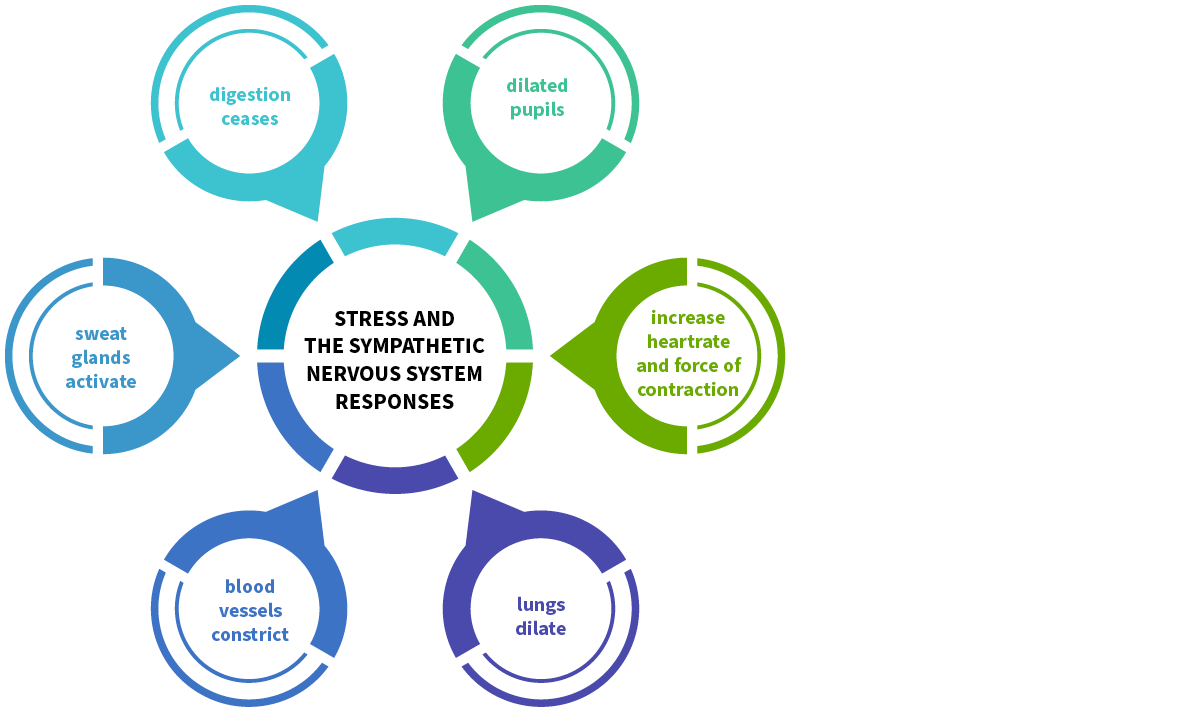
In Unit 1, we looked at the impact of stress and anxious thoughts on the brain.
In Unit 2, we looked at the emotional and mental health benefits of a positive mindset, through gratitude and meeting challenge with a solution-focused approach. Using this mental attitude, the brain is able to continue acting from the left pre-frontal cortex, making logical and effective decisions, using the primitive brain only when in mortal peril.
In this unit we will think about the body and how it is impacted by stress. But, as always, we begin with the brain.
The hypothalamus continued
The hypothalamus sits in the ‘primitive brain’ as part of the limbic system. The limbic system supports functions including behaviour, motivation, long-term memory, emotion and the sense of smell (probably the origin of the saying ‘the smell of fear’, as it sits next to the amygdala with it’s fight and flight responses).
The hypothalamus itself has many purposes, most significantly the regulation of the nervous system and endocrine system via the pituitary gland. It controls metabolic process and hormone release and so is linked to changes in body temperature, hunger, thirst, sleep, circadian rhythms and sleep. It is also in control of reacting to danger, taking command over the functions of the body to create a burst of energy so that the person can fight or flee.
The hypothalamus and stress
When a person detects stress, the eyes or ears (or both) send a message to the amygdala. This interprets the sights and sounds and if danger is perceived, it sends a distress signal to the hypothalamus. The hypothalamus it goes into an alarm phase and turns on the Sympathetic Nervous System. The body responds in this way:

This is the brain going into its fear response, as discussed in Unit 1.
Once the sympathetic nervous system is in action, the sympathetic nerves release adrenaline. This makes the heart beat harder and faster, raising blood pressure. As blood pressure rises, breathing becomes more rapid and small airways in the lungs become wider, so that more oxygen is received with each breath. Extra oxygen is sent to the brain, increasing alertness.
Sight, hearing and other sense become sharper. Blood vessels to the skin constrict, making the person paler as the vessels direct blood to the muscles. The liver releases stored sugar into the blood, hair stands up and the body begins to sweat. Adrenaline triggers the release of blood sugar and fats from temporary storage sites in the body. These nutrients flood into the bloodstream, providing energy to all parts of the body. The ‘fight or flight’ response has been triggered. This process happens very quickly, allowing us to respond to danger before we are even consciously aware of it.
This process is often described as being like the accelerator of a car. Like a car accelerating from 0 – 100 miles an hour in seconds, the body can go from resting to high alert in response to danger. The hypothalamus is that accelerator, jump-starting the body through shots of adrenaline.
Reflection
Think of a time when you were under stress. What physical reactions did your body have?